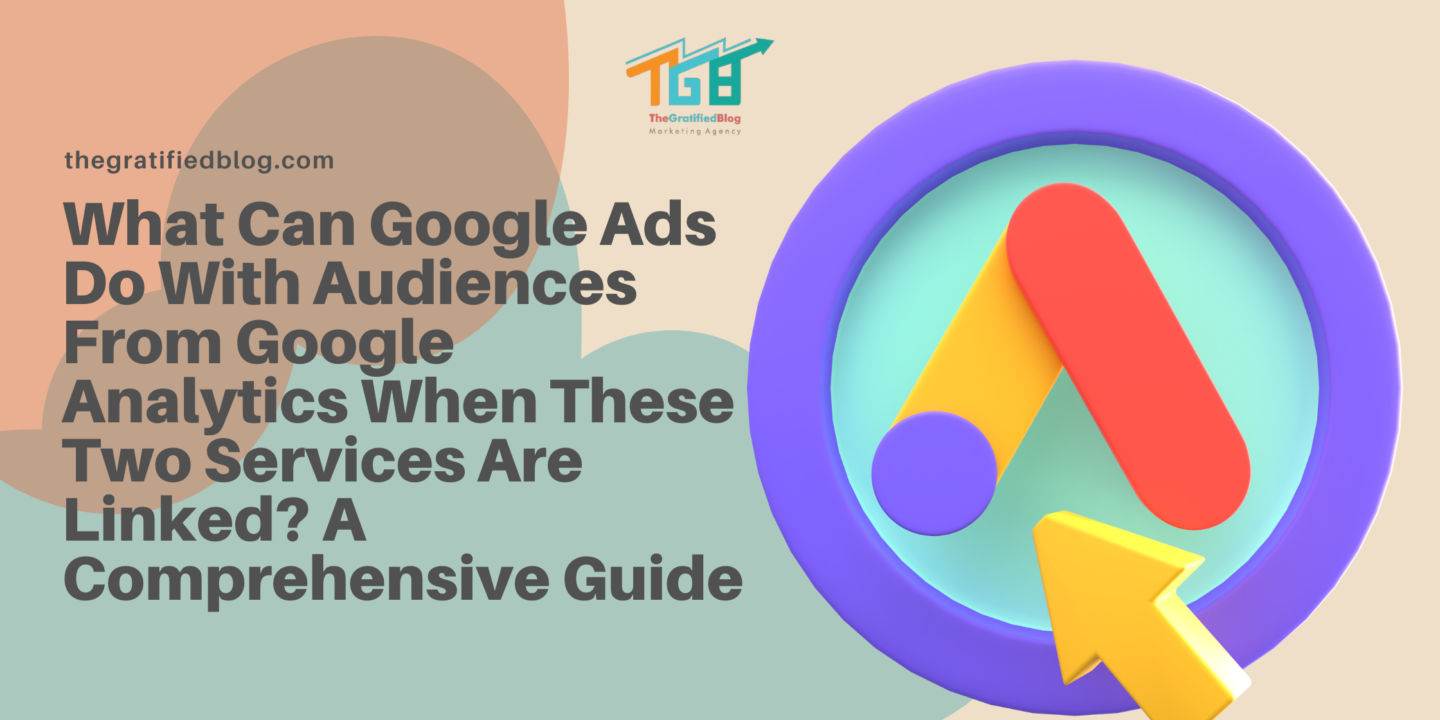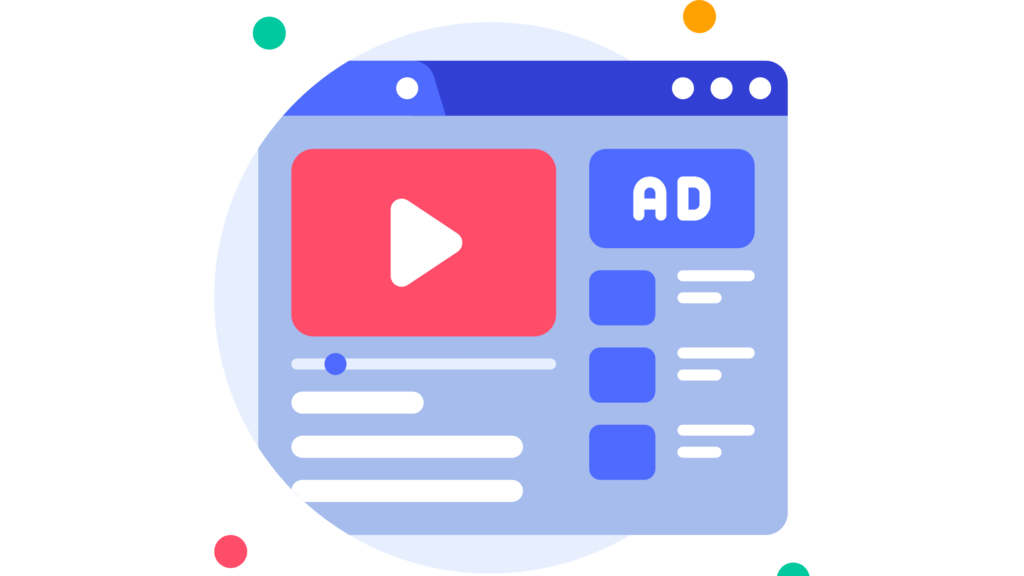
Imagine using Google Ads to reach your target audience, but there’s a problem – you lack the insights needed to fine-tune your strategies effectively. You’re flying blind, unsure of what truly resonates with your audience and where your ad budget is best spent.
This is where what can Google Ads do with audiences from Google Analytics when these two services are linked? becomes a burning question. Instead of only bridging the gap between two services, the objective is to maximize the potential of your marketing initiatives.
So, what can Google Ads do with audiences from Google Analytics when these two services are linked? Let’s dive into the solution that unlocks the power of this integration.
Understanding The Google Ads and Google Analytics Integration
Integrating Google Ads and Google Analytics is a breeze. You can connect your Google Ads account to your Google Analytics account through a simple setup process. Once they’re linked, your Ads account can access all the juicy data from Analytics, and vice versa.
Your Google Ads data and Google Analytics data can sync up seamlessly. As a result, Google Analytics automatically imports all clicks, impressions, and conversions from your Google Ads campaigns. Everything is in one location, so you don’t have to manually juggle numbers any longer.
Plus, what can Google Ads do with audiences from Google Analytics when these two services are linked? They can share valuable insights back to your Google Ads account. You can more easily determine what is working and what isn’t thanks to this integration.

Benefits of Google Ads and Google Analytics Integration
The integration of Google Ads and Google Analytics is not just tech jargon; it’s about making your advertising life easier, more effective, and ultimately, more successful. Here is what you stand to benefit from their integration:
- Seamless Tracking of Ad Performance
Imagine launching a new Google Ads campaign, and you’re itching to see how it performs. With integration, tracking becomes a breeze. You can see how your ads impact user behavior on your website right from your Google Analytics dashboard.
- Deeper Audience Insights
Without integration, you’re kind of shooting in the dark, not really knowing who’s interacting with your ads. But what can Google Ads do with audiences from Google Analytics when these two services are linked? They give you a spotlight on your audience. You’ll discover who’s visiting your site, what they’re interested in, and how they navigate your content.
- Enhanced Conversion Tracking
What can Google Ads do with audiences from Google Analytics when these two services are linked? They enhance your conversion tracking. You can see exactly which ads lead to conversions and understand the paths users take before making a decision.
Audience Insights And How You Can Use Them For Advertising
When you ask, “What can Google Ads do with audiences from Google Analytics when these two services are linked?” The answer is: It empowers you to create highly targeted, personalized ad campaigns that hit the bullseye with your audience.
Here’s what to analyze with Google Analytics audience reports:
- Demographics and User Interests
Imagine having a crystal ball that reveals who’s interested in your products or services. Well, that’s what Google Analytics audience reports provide. You get a sneak peek into the demographics of your website visitors – age, gender, location – and their interests.
- Behavior Flow and Engagement Metrics
Ever wondered how users flow through your website? With Google Analytics, you can track their journey, from the first click to the final conversion. You’ll know which pages they love and which ones they bounce from.
- Conversion Paths and Goal Tracking
On your website, you set up particular objectives like registering for a newsletter or making a transaction. In addition to tracking these objectives, Google Analytics also demonstrates the routes people take to get there.
Creating Custom Audience Segments
Creating custom audience segments is all about refining your target audience to make your advertising campaigns more precise and effective. You divide up your website visitors or potential clients into smaller, more focused groups based on their behavior, demographics, interests, or other pertinent factors rather than considering them as a single, homogenous group.
By segmenting your target market, you can adjust your marketing strategies to meet the specific demands and characteristics of each group.
- Based on User Behavior
Custom audience segments are like having a backstage pass to your users’ actions. You can create segments based on how users interact with your site – like those who abandoned their shopping carts or those who visited your blog. These segments allow you to tailor your messaging to specific user groups.
- Based on Demographics and Interests
Remember those demographics and interests we mentioned earlier? You can take it a step further by creating custom segments based on these factors. Imagine showing fitness gear to health enthusiasts and gourmet recipes to the foodies. That’s the power of personalized targeting.
Using Audience Insights for Improved Targeting
It all boils down to making your advertising more efficient and targeted by using the knowledge and data you gain from analyzing your audience. It comprises modifying your advertising tactics in light of the interactions, habits, and preferences of your target market that you have discovered.
This will provide you the ability to communicate with your target audience in a way that is more engaging and current, which will eventually lead to better outcomes.
- Tailoring Ad Messaging
With access to audience information, you can create advertising that speaks directly to the tastes and actions of your target market. It is comparable to speaking with a buddy who is well aware of your interests. You’re not just advertising; you’re engaging in a meaningful dialogue.
- Adjusting Bidding Strategies
You don’t have to play the bidding game blindly. Knowing your audience’s behavior allows you to adjust your bidding strategies smartly. Bid higher for high-value segments and save on less-engaged ones. It’s like playing poker with your cards facing up; you make strategic moves with confidence.
- Optimizing Ad Placements
Spending money on advertisements that fail to connect with your audience is a waste. You may optimize ad placements using audience information to make sure your message is seen by the right people at the appropriate time. It’s like choosing the perfect location for your store; foot traffic increases, and so do your sales.
Strategies for Successful Campaigns Using Google Analytics and Google Ads
It all comes down to planning and utilizing the knowledge you receive from combining Google Ads with Google Analytics when it comes to managing effective Google Ads campaigns. These tactics provide you the ability to manage very successful Google Ads campaigns that connect with your audience, maximize ROI, and encourage conversions.
Let’s dive into some actionable strategies that will supercharge your campaigns.
- Build Data-Driven Google Ads Campaigns
Building data-driven Google Ads campaigns is all about using data and insights to create and manage your advertising campaigns effectively. It means making informed decisions based on real-time information and audience behavior rather than relying on guesswork.
You can build a data-driven Google Ads campaign by:
- Aligning Ad Groups with Audience Segments
Imagine your campaigns as a well-organized library where each book is perfectly categorized. By aligning your ad groups with audience segments, you’re doing just that. You’re creating a clear structure that ensures your ads are relevant to the right people.
- Creating Relevant Ad Copy and Creative
Now that you’ve segmented your audience, it’s time to craft ad copy and creative that resonate. You’re speaking to certain groups, not just broadcasting generalized messages. Because individuals feel heard, it’s similar to having an intimate conversation with a buddy. Your audience will be more likely to click and buy if they think your content is speaking directly to them.
- Implementing A/B Testing for Ad Variations
Implementing A/B testing for ad variations is all about experimenting with different versions of your ads to determine which ones perform better. It’s a crucial process in optimizing your advertising campaigns. You can implement A/B testing for Ad variations by monitoring ad performance and adjusting
All you have to do is create variations of your ads to see which ones perform best. By regularly monitoring ad performance and adjusting based on real data, you’re ensuring that your campaigns are always optimized for success. It’s a continuous improvement process.
- Budget Allocation Based on Audience Value
Your advertising budget is precious, so it’s crucial to allocate it wisely. With the insights you gain, you can identify which audience segments bring the most value and maximize ROI with data-driven decisions.
Put more of your budget into campaigns targeting high-value segments. It’s like investing in stocks that you know will yield the best returns. This data-backed approach maximizes your ROI.
- Tracking Conversions and Attributing Them to Specific Ads
Tracking conversions and attributing them to specific ads is all about understanding which of your online advertisements are driving valuable actions or outcomes on your website. This process helps you measure the effectiveness of your ad campaigns and allocate your advertising budget more efficiently.
You can track conversions and attribute them to specific ads by:
- Knowing The Role of Google Analytics in Conversion Analysis
So, what can Google Ads do with audiences from Google Analytics when these two services are linked? It can help you track conversions with pinpoint accuracy. Google Analytics plays a critical role here. It allows you to see which specific ads led to conversions, giving you a clear picture of what’s working and what needs improvement.
- Goal Setting and Measurement
Setting clear goals is like plotting your course on a map. Google Analytics lets you measure your progress towards those goals. You can see which ads are driving the actions you want your audience to take. It’s not just about clicks; it’s about meaningful actions like sign-ups, purchases, or inquiries. By setting and measuring goals, you’re ensuring your campaigns align with your business objectives.
Conclusion
In conclusion, what can Google Ads do with audiences from Google Analytics when these two services are linked? They are the key to unlocking targeted advertising success. By creating data-driven campaigns, implementing A/B testing, allocating budgets strategically, and tracking conversions accurately, you can optimize your advertising efforts like never before.
The integration empowers you to connect with your audience on a deeper level and make data-backed decisions, ultimately driving better results and maximizing your ROI.








No Comments